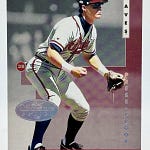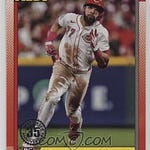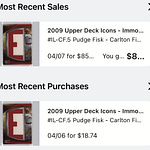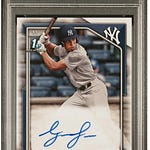Affiliate Disclosure: This post contains affiliate links. As I am a part of the eBay Partner Network and other programs, if you follow these links and make a purchase, I’ll receive commission (at no cost to you). I appreciate your support!
Disclosure: I also work closely with CollX, and this content may be disseminated via the CollX app at some point. That said, all opinions, examples, experiences are entirely my own, and not shaped by any third party input or guidance.
This is not buying or investment advice. I’m simply reporting the data I’m seeing. Please do your own research and make your own decisions. Just because cards have increased in value up to this point, it doesn’t mean they will continue to do so.
One of the biggest mistakes people make when trying to flip sports cards is not comping properly. Plain and simple.
If you want to find cards to buy and flip, you need to be able to identify good deals before others and then confidently make purchases.
The reason I’m able to flip so many cards for more than I paid isn’t because I’m guessing that a card’s going to get hot. Sure, I speculate from time to time, but that’s usually only when I’m buying prospects. Most of the time, though, I’m buying a card that’s already worth more than the price I’m paying.
And it’s not that I comp better than others…I think I just take the extra step(s) to try and find a rare card’s value when others don’t or give up too soon.
The most recent example is this hockey pickup: a 1997-98 Upper Deck Sixth Sense Wizards Eric Lindros /100 Die Cut. I bought it for $50 off of CollX, and it wasn’t a gamble—I knew it was worth more.
Now, if you were to check eBay’s current listings, you wouldn’t see this card for sale. You also won’t find this card using eBay’s default sold listings filter either.
You have to dig deeper.
And conveniently, you can dive into three years of eBay data using the eBay research tool.
To get there, on the app, go to “Selling” and you’ll see this:
Or on the browser, go to “Sell” then hover over “Research” and click “Product Research” and you’ll see the same tool.
Three years of data is necessary because rare cards like this might only sell once every year or two. Even if a card sold every 6 months the sale wouldn’t show up as a sold listing through the default eBay “Sold Items” filter. I’m all about freshness in comps, but sometimes you just don’t have that luxury.
So, back to the card, based on the comps I found, I thought I could probably get $400–500 for it.
Well, I ended up selling it for $250 before fees—obviously not as high as I hoped, but enough profit for me to call it a nice win as I move on to other flipping opportunities.
Along the way from buy to sell, I got the usual unsolicited opinions. One person messaged me saying:
“The card is not even worth 50 bucks.”
Ok.
I responded with “No? What’s it worth?” knowing that I had the proof it was worth more than $50 and was obviously thinking they didn’t.
At that point, they changed tunes and said:
“Maybe it is my bed. I can’t find another one on eBay. My apologies. I saw a SergeyFedorov for 575. My apologies.”
And that right there is the entire point.
I can’t say what this person was looking at or not looking at, but my interpretation is that no listings means no value, or that the card’s irrelevant.
But in general, when you’re flipping, that’s your opportunity.
Rarity creates leverage - if you can find the data (or little of it) that’s actually a good sign that the card might be a good one to consider.
That’s why I always say: comping isn’t just looking at what’s sold recently. It’s figuring out why something sold, when it sold, and what it means when there’s no data at all.
You’re not just looking for green numbers and timestamps. You’re building a case, so that you can make purchases confidently, and, when someone questions your pricing and wants you to come down to whatever price they have in their head, you’ve already got the receipts.
So yeah, maybe I didn’t squeeze out the full $400+ I originally aimed for, but I made profit on a card most people overlooked. Not by guessing, not by gambling. Just by doing a little extra legwork.
Resources: Sneaky Valuable Card List, Proft Tracker, Flips Archive
















Share this post